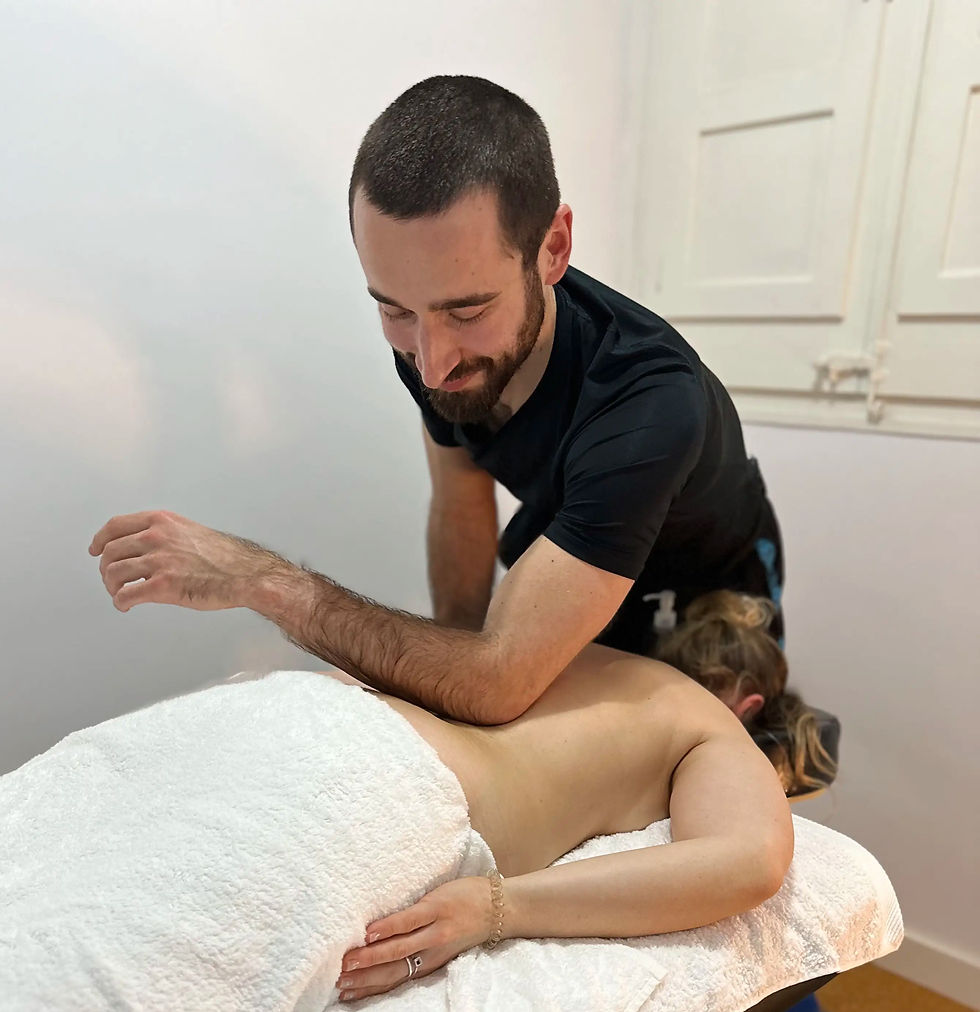Let’s Dig Deeper — Deep Tissue Massage
- patrikzsebedits
- Oct 8
- 3 min read
Updated: Oct 9
Deep Tissue Massage is one of the most popular treatments I offer — and for good reason.Most of us carry tension somewhere in our bodies: in the neck and shoulders, the upper or lower back, or even in the legs. Many clients are surprised when, during a session, they realise how much tightness they’ve been holding in their forearms or hamstrings.

What Is Deep Tissue Massage?
Deep Tissue Massage focuses on the deeper layers of muscle and connective tissue (called fascia).To reach these layers effectively, I use slower, more focused techniques — often with my elbows, forearms, knuckles, or reinforced fingers — to apply firm, controlled pressure.
This approach helps release long-held tension, ease chronic pain, and restore mobility to areas that feel tight or restricted.
How Do Muscles and Fascia Work?
For your body to move freely and efficiently, your muscles and fascia need to slide and glide smoothly over each other.When we sit too much, experience ongoing stress, don’t hydrate enough, or have poor nutrition, this tissue can become less mobile — forming small restrictions or “adhesions.”
For example, if you spend long hours sitting, your hamstrings (the muscles at the back of your thighs) remain shortened, while the fascia around your glutes may become overstretched. As a result, your glutes might not activate properly when you stand, walk, or climb stairs. To compensate, your lower back muscles start working harder than they should, which over time can lead to pain or stiffness.
That’s why pain is often not located where the real problem begins.
How Can Deep Tissue Massage Help?
During a Deep Tissue session, I use slow, deep strokes and sustained pressure to work through layers of tension.The combination of compression (pressing down) and gentle traction (gliding or pulling through the tissue) encourages fascia and muscle fibers to move more freely again.
With regular treatments, these restrictions can gradually soften, improving mobility and reducing pain.In other words, we’re helping your muscles and fascia “remember” how to move in harmony.
Is Deep Tissue Massage Painful?
The honest answer: it shouldn’t be.
You might feel what many describe as a “good pain” — that satisfying, releasing sensation when tension melts away. But the pressure should never cause sharp or unbearable discomfort. When pressure is too intense, the body instinctively tenses up, which defeats the purpose of the massage.
A great teacher once told me during my Sports Massage training:
“Don’t ask the client if they want more pressure — listen to the tissue.”
That’s advice I still follow today. As a therapist, I constantly observe small cues from your body — a subtle tightening of the glutes, a shift in breathing, a twitch of a muscle — to know when to adjust my technique.
So, is Deep Tissue Massage painful?
No — not if it’s done correctly. It should feel like deep relief, not distress.
How Often Should You Get a Deep Tissue Massage?
Let’s be honest — your body will already thank you if you make time for a regular monthly massage.To make that easier, I created a Monthly Massage Subscription: for only €55 per month, you’ll receive a 60-minute Deep Tissue or Relaxing Massage, plus a 10% discount code for any additional bookings that month.
It’s a simple way to keep your fascia healthy, your muscles supple, and your stress levels in check.
Looking for a Lighter Touch?
If you prefer a gentler experience, book a Relaxing Massage instead.You can read more about how it helps calm your nervous system and restore balance in this blog post.
If you’d like to try one of my treatments, use the code BLOG10 at checkout to get €10 off any 60- or 90-minute booking.



Comments